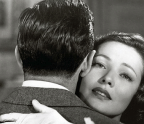



Photobooks force us to think outside and beyond the photograph. They serve as activist tools and sites for introspection. In South Asia, photobooks have experienced remarkable growth in recent years, instigated by artists’ urges to tell personal stories related to their social, political, and cultural situations. This gesture carries the belief that these stories are worth telling, that they can act as connective tissue between people in a global nervous system. The photobook experience—understood as the compilation of skillfully produced pictures and texts, held in one’s hand and savored, attentive to aesthetic and intellectual pleasures—can arguably be traced in India to the Islamic book, especially Mughal-era muraqqa, which contain painted images and writings. In the nineteenth century, the Indian photographer Raja Deen Dayal’s albums, with their careful arrangements of texts and images documenting architectural heritage, military maneuvers, and VIP visits to princely territories, and assembled by hand as multiples, can be considered photobooks in today’s terms.
Through the late twentieth century, the cost of publishing in India was prohibitive, despite the diversification of photographic practices. Those who found ways did so outside the country, such as Raghubir Singh, whose photobooks captured a sense of geographic and cultural contemporaneity. Dayanita Singh has been recognized for rethinking the photobook by playing with scale, materiality, and the nonstatic sequencing of images. The economic liberalization of the 1990s in India led to better quality and more affordable publishing opportunities with specialized printers in tune with photobook and self-publishing cultures. Initiatives such as BIND, the Alkazi






